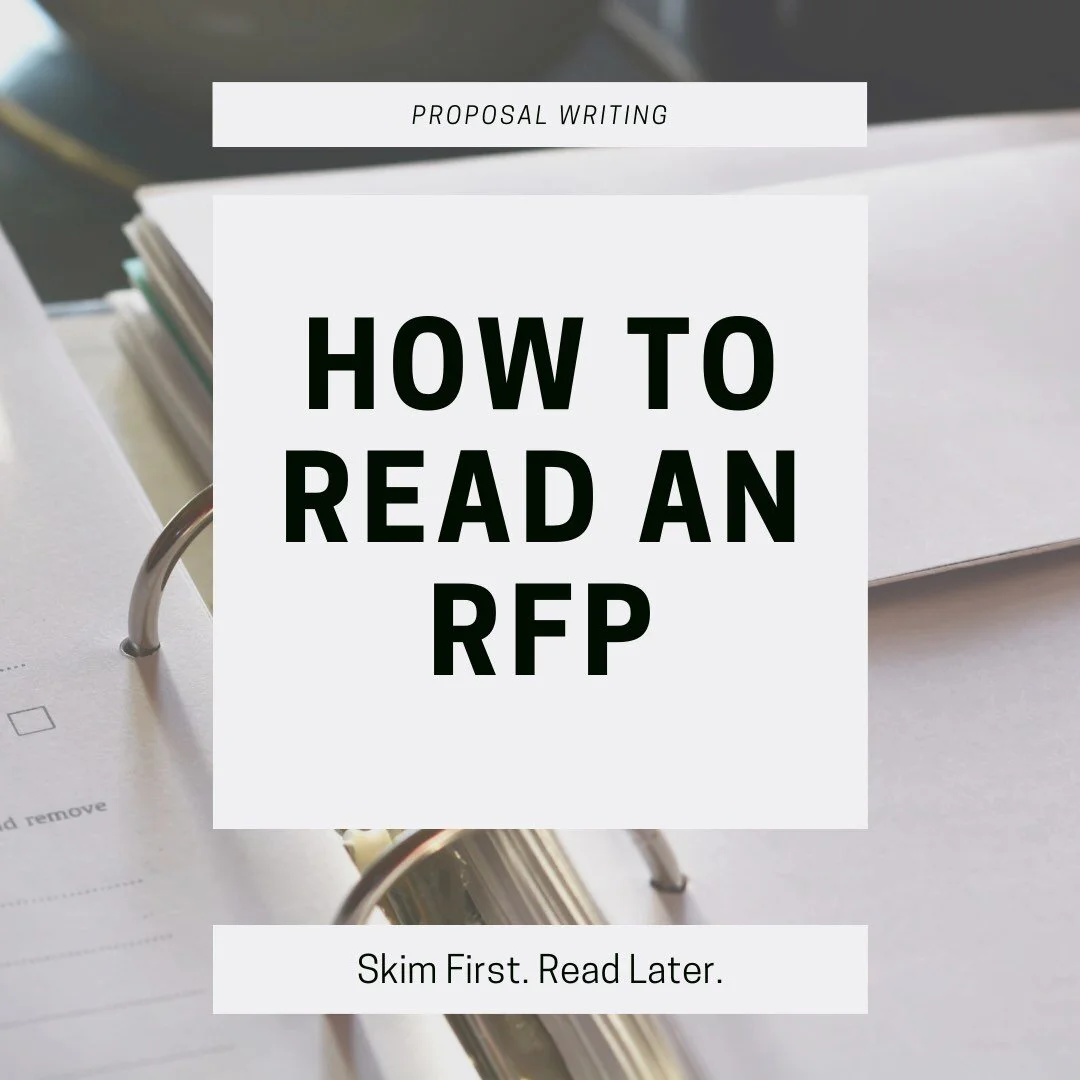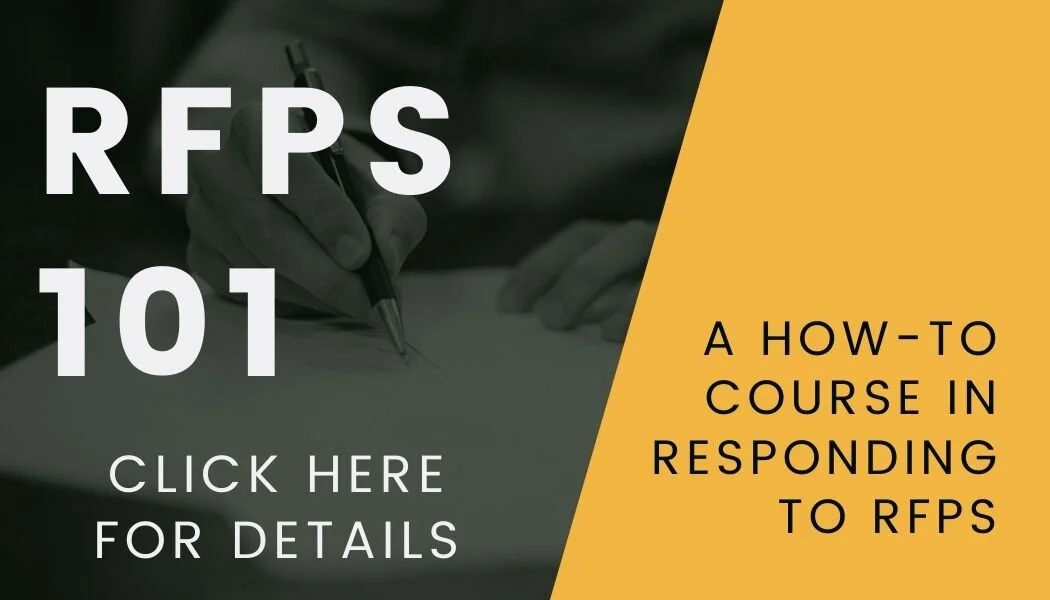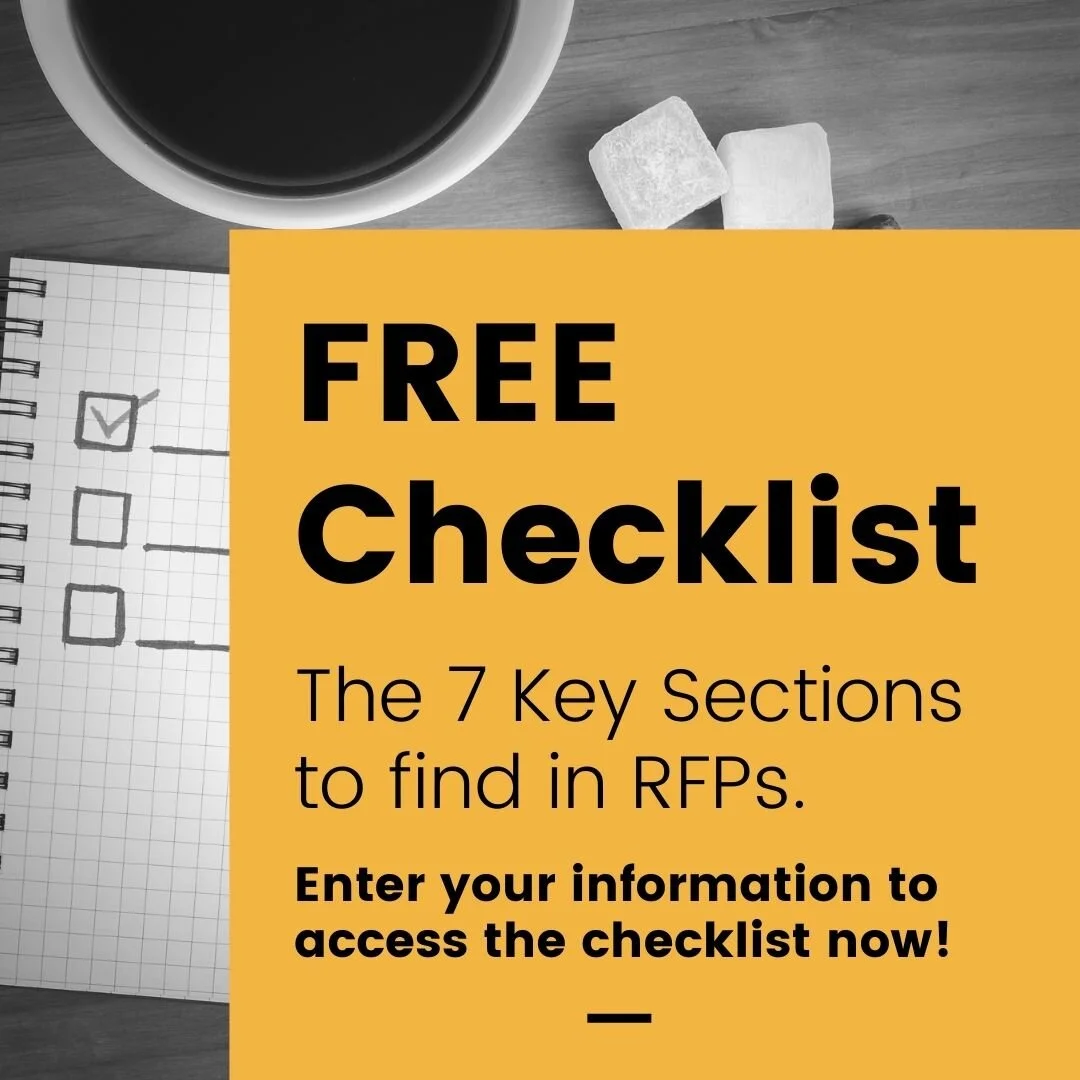How to Read an RFP
Whether you’re an expert with RFPs or this is your first time reviewing one, opening up that document can be overwhelming. Many RFPs are lengthy, filled with requirements, and structured in a way that makes it difficult to find exactly what you need. Thankfully, there is a way to make skimming an RFP easier so you can quickly find the important information and determine if responding makes sense for your company.
What is an RFP
Before we dive into the meat of an RFP, let’s first review what exactly an RFP is and why you should respond.
An RFP, Request for Proposal, is often a formal request issued by an organization to solicit multiple vendors to propose a solution and pricing for a specific project or contract. All types of organizations issue RFPs, but they are particularly common with government and education agencies since they are publicly funded. The RFP will outline key information that all companies must provide, and many times it will also include a description of the evaluation criteria they will use to review proposals. Depending on the complexity of the RFP and project, you may be given 1 week to 6 months to respond. Three weeks is most common.
Companies release RFPs typically for high-value projects, and many are for ongoing work. If your company is hoping to secure consistent revenue, incorporating RFPs into your sales strategy can help you to find new opportunities. Of course, it’s best to have a process in place to work with the customer before going to RFP, but it’s not unheard of to win a proposal without having created that relationship in advance.
How to Read an RFP
Once you receive an RFP, you should first skim through the document to make sure you meet all of the key requirements and that you have time to respond. Below are the key sections to find when skimming an RFP.
Key Dates
The key dates are one of the most important sections to find when reading an RFP. Look for the proposal due date, the deadline for questions and when they’ll be posted, and the date of the pre-bid meeting (if applicable). If the proposal is due in 2 days and you’re just now learning about it, you likely won’t be able to create a quality response in time. It’s better to spend your time on a proposal where you are able to take your time to develop a thoughtful response.
For some projects, there may be an implementation deadline. When reviewing the RFP, pay attention to any deadlines related to the project to make sure your team can meet that requirement.
Project Description
Of course, the project description is a critical section to watch for as you skim through the RFP. The project description, also called project overview or summary, details the work that needs to be provided as part of the project. This is where you learn if your company is capable of supporting the contract and the scope of what is required.
Some RFPs will also provide information on if it’s a completely new project or if they’re releasing the RFP because an existing contract expired. If it’s the latter, try to find out who currently holds the contract and if the customer is happy with their work.
Evaluation Criteria
Not every RFP has evaluation criteria listed, but if it does, take note of how they’ll be evaluating responses. This can help you to determine if you have a real chance at winning the work. For example, if a large percentage of the evaluation is based on having a local presence and you’re based in a different state, then they most likely will go with a local bidder anyway. Reviewing the evaluation criteria helps you to establish your proposal strategy and present your best possible pitch.
Submission Details
Every RFP will describe how you should submit your proposal. Some organizations require physical hard copies, which means you need to plan to finish your proposal at least 1 day (ideally 2) before the deadline to allow time for shipping. Others will allow you to submit it electronically, but you may have to use an online portal. Always test the portal early in the proposal process to make sure there are no issues. You don’t want to discover a technical issue one hour before the proposal deadline.
Proposal Format (if required)
Some RFPs will also outline the specific format your proposal should follow. This makes responding much easier because you know exactly what information to include and in what order. Always follow the proposal format exactly if it’s provided or you risk being deemed non-compliant. If a proposal format isn’t clearly detailed, you can create your own.
Required Responses
Sometimes the responses the customer expects to see are outlined in the proposal format, but occasionally RFPs will have different sections that you need to respond to as well. There may even be completely separate documents that will require most of your effort. This is why it’s important to review the entire RFP and all of its supporting documents when creating your proposal. Additional required responses might come in the form of describing how your solution complies with their desired specifications, inclusion of a detailed implementation plan, or a response to a few sections of their contract.
Terms and Conditions
Lastly, almost every RFP will include some form of contract that needs to be reviewed. You should have your legal team review it in detail to determine if you can comply or need to submit exceptions. Keep in mind that some organizations require you to agree to their terms exactly. If the RFP doesn’t state if exceptions are accepted, you can ask this as a question during the question period.
Creating Your Proposal Response
Now that you know how to skim the RFP to determine if it’s worth responding, it’s time to create your proposal! Start by outlining the proposal according to the required format. Once you have an outline, fill in key content and identify any competitive positions you want to highlight. If you are at a loss for how to accomplish this, bring in help. Allow plenty of time for review and finalizing the proposal according to the submission requirements. Send it off in time, and wait to hear back on next steps.
If you’re ready to get started with RFPs but don’t know where to find them, you can always check BidSync, one of the largest RFP aggregators in the US. Use the guidelines above to evaluate the RFP, and then create content that speaks directly to the customer to put your best proposal in their hands.
Download the Free Checklist with the 7 Key Sections to find when reading RFPs.
Save time and create better responses.
Want to know more about RFPs?
Check out RFPs 101, a step-by-step course for responding to RFPs.





